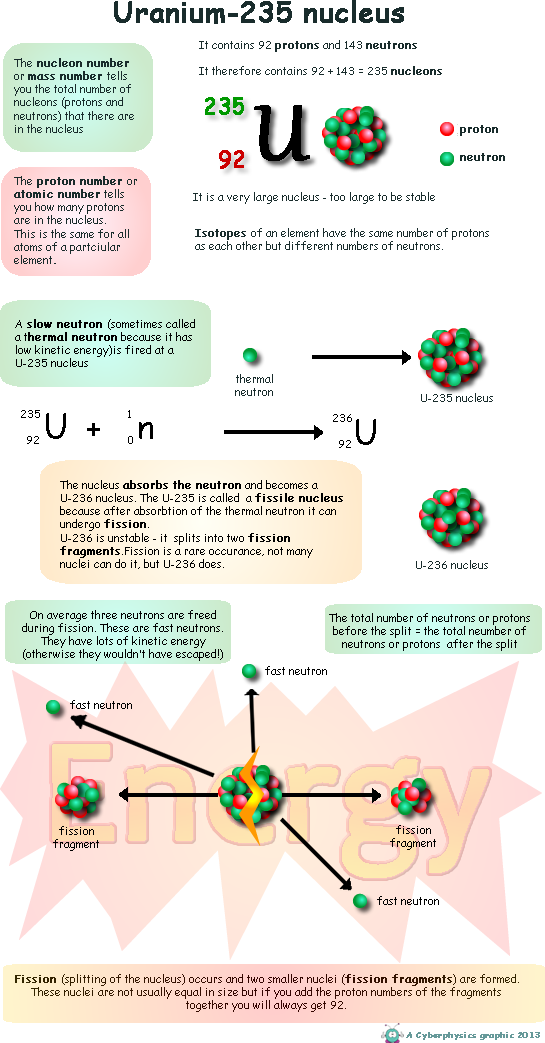    |
||||
 Fission - The splitting of the atom's nucleus Fission - The splitting of the atom's nucleus |
||||
|
Some atomic nuclei split into two parts (nuclear fission) - not usually equally sized ones but always into two - giving two smaller fission fragments. Not all atoms do this, only ones that are really unstable. Heat energy is released when an atom nucleus splits.
Uranium-235 can be made to undergo fission by firing a neutron at the nucleus, which when it absorbs that neutron, then undergoes fission. This is called induced fission. Uranium nuclei are a store of nuclear (or atomic) energy that we can use as a fuel. The heat produced by induced fission is used commercially to produce electricity in nuclear power stations. The heat energy is used to boil water and the pressure of the steam produced is used to turn turbines which operate electrical generators and make electricity.
The splitting of the atomic nucleus (nuclear fission) produces a lot of energy - see binding energy and mass difference. This can then be used to make electricity from the heat extracted from a nuclear reactor (by using it to boil water, producing steam, the pressure from which can be used to turn turbines (so that electricity can be produced by electromagnetic induction)). This is called nuclear power or atomic power. Spontaneous fission is fission that occurs naturally. As the name suggests, spontaneous fission follows exactly the same process as induced nuclear fission, except that it occurs without the atom having been struck by a neutron or other particle. Spontaneous fissions release neutrons as all fissions do, and so if a critical mass is present, a spontaneous fission can initiate a chain reaction.
|
||||
 |
||||




